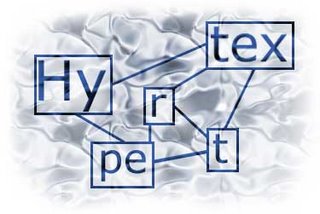
In Hypertext 2.0, George Landow finds traditional print to be doomed to only creating fixed texts with no polycentricity.
He understands that "without fixity one cannot have a unitary text " without delving into the history of textual fixity in print. Landow ignores countless tendencies of printing that work to disclose the structure of closure that makes texts possible. These tendencies are resisted by publishers who do want to sell seamless messages, but they still prevail occasionally. Jerome McGann is astute in his discussion of the book designed by William Morris, which reveals its closed physicality at the same time that its author uses it to produce a beautiful, polycentric text that employs literary devices contingent upon mechanical print itself.
In other words, McGann acknowledges that texts by Morris and others simultaneously rely upon and resist mechanical printing, and are openly posed as products of technology: "there is a sense in which any device that calls the reader's attention to the constructed nature of texts contains an implicit or possible 'mode of resistance to the literary work of art'." Hypertext provides similar tools, which Landow praises, but hypertext is as much a technological product as printed books are.
If the "mode of resistance" of Morris's books was through typography, than the corresponding mode for hypertext is the link; both modes allow the text to disclose its limits and then attempt to transcend them.
M.R. Allen
Download ebooks on www.frenchtheory.com
See that post with different algorithms in metabole
See the journal French Metablog with today different posts
Enter Hypertextual as a member
